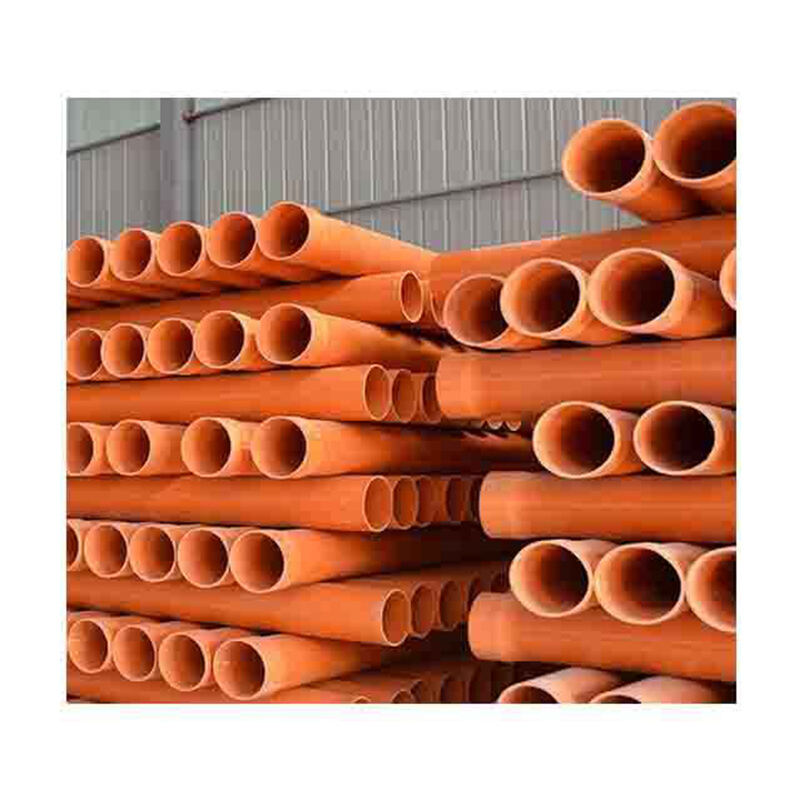2025 DWV Pipe Buying Guide: Types, Sizes & Applications
Understanding Modern Drainage, Waste, and Vent Plumbing Solutions
The world of plumbing infrastructure continues to evolve, and dwv pipe remains at the forefront of efficient drainage systems. As we approach 2025, understanding the intricacies of drainage, waste, and vent piping has become crucial for both professionals and property owners. This comprehensive guide explores everything you need to know about dwv pipe systems, from material selection to installation best practices.
Modern construction demands reliable plumbing solutions that can withstand decades of use while meeting strict building codes and environmental standards. DWV pipe systems serve as the backbone of any building's waste management infrastructure, carefully engineered to maintain proper pressure relationships and ensure efficient drainage flow.
Essential DWV Pipe Materials and Characteristics
PVC DWV Solutions
Polyvinyl chloride (PVC) dwv pipe has become increasingly popular in residential and commercial applications. Its lightweight nature, corrosion resistance, and cost-effectiveness make it an excellent choice for modern plumbing systems. PVC dwv pipe offers superior chemical resistance and can withstand temperatures up to 140°F, making it suitable for most domestic applications.
When selecting PVC dwv pipe, contractors often appreciate its ease of installation and long-term durability. The smooth interior walls facilitate optimal flow rates and minimize the risk of clogs, while the material's inherent flexibility helps absorb mechanical stress and thermal expansion.
ABS Pipe Systems
Acrylonitrile Butadiene Styrene (ABS) dwv pipe presents another viable option for drainage systems. Known for its excellent impact resistance and ability to handle extreme temperatures, ABS has gained significant traction in colder climates. The material's black color helps protect against UV degradation, making it suitable for both indoor and outdoor applications.
ABS dwv pipe systems offer remarkable strength-to-weight ratios and maintain their structural integrity even in challenging environmental conditions. Their superior sound-dampening properties make them particularly attractive for multi-story buildings where noise reduction is a priority.

Sizing and Dimensional Considerations
Standard DWV Pipe Dimensions
Proper sizing of dwv pipe systems is crucial for optimal performance. Common residential applications typically utilize pipes ranging from 1½ inches to 4 inches in diameter, while commercial installations may require larger dimensions. The sizing must account for expected flow rates, fixture units, and local building codes.
When designing a dwv pipe network, professionals consider factors such as the minimum slope requirements, maximum distance between vents, and proper sizing of branch lines. These calculations ensure adequate drainage velocity while preventing siphoning effects that could compromise system performance.
Load-Bearing Capacity and Flow Rates
Understanding the relationship between pipe diameter and flow capacity helps determine the appropriate dwv pipe size for specific applications. Larger diameter pipes can handle greater volumes but require proper support and careful consideration of installation space. The system must maintain minimum flow rates to prevent sediment accumulation while avoiding excessive velocities that could cause turbulence.
Professional installers calculate load-bearing requirements based on fixture unit values and peak demand periods. This careful planning ensures the dwv pipe system can efficiently handle maximum loads without compromising performance or creating unnecessary strain on the structure.
Installation Best Practices and Techniques
Proper Joint Assembly
Successful dwv pipe installation relies heavily on proper joint assembly techniques. Whether using solvent welding for PVC or ABS systems, or mechanical joints for different materials, following manufacturer specifications is essential. Clean cuts, proper preparation, and appropriate adhesive application ensure long-lasting, leak-free connections.
Professional installers understand the importance of allowing adequate curing time for solvent-welded joints and maintaining proper alignment throughout the installation process. They also consider expansion and contraction factors when planning joint locations and support points.
Support and Hanging Methods
Proper support of dwv pipe systems prevents sagging, maintains required slopes, and ensures long-term reliability. Installers must follow specific spacing requirements for hangers and supports, taking into account pipe size, material type, and local code requirements. The use of appropriate isolation materials prevents contact between dissimilar metals and reduces noise transmission.
Strategic placement of expansion joints and careful consideration of building movement help maintain system integrity over time. Professional installations include adequate clearance for thermal expansion and proper bracing to prevent lateral movement.
Frequently Asked Questions About DWV Pipe Systems
What is the expected lifespan of a DWV pipe system?
Modern dwv pipe systems, when properly installed and maintained, typically last 50 years or more. PVC and ABS systems often exceed their estimated service life, with many installations continuing to perform effectively well beyond initial projections. Regular inspection and proper usage habits can significantly extend system longevity.
Can different types of DWV pipe materials be combined in one system?
While it's technically possible to combine different dwv pipe materials, it requires special consideration and appropriate transition fittings. Professional installers recommend maintaining consistency in material choice throughout the system when possible to ensure optimal performance and simplify future maintenance.
How often should DWV pipe systems be inspected?
Professional plumbers recommend annual inspections of dwv pipe systems to identify potential issues early. Commercial properties may require more frequent inspections depending on usage patterns and local regulations. Regular maintenance checks help prevent costly repairs and ensure continuous system efficiency.








